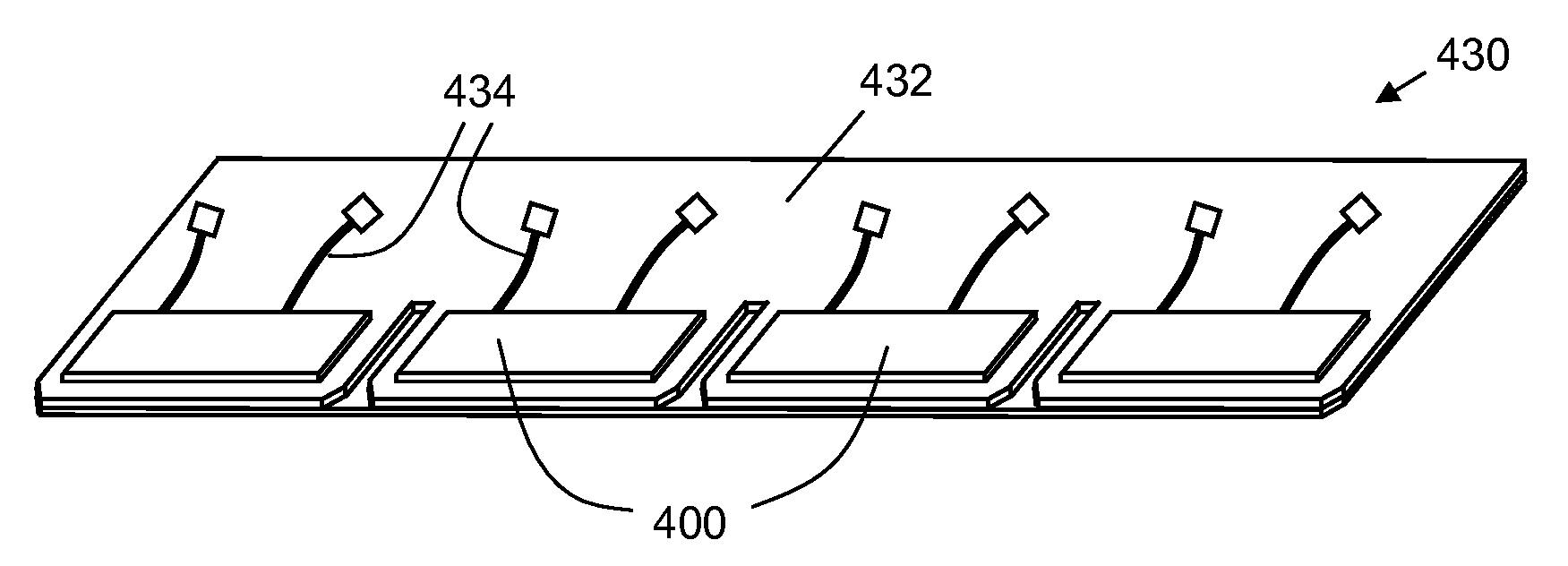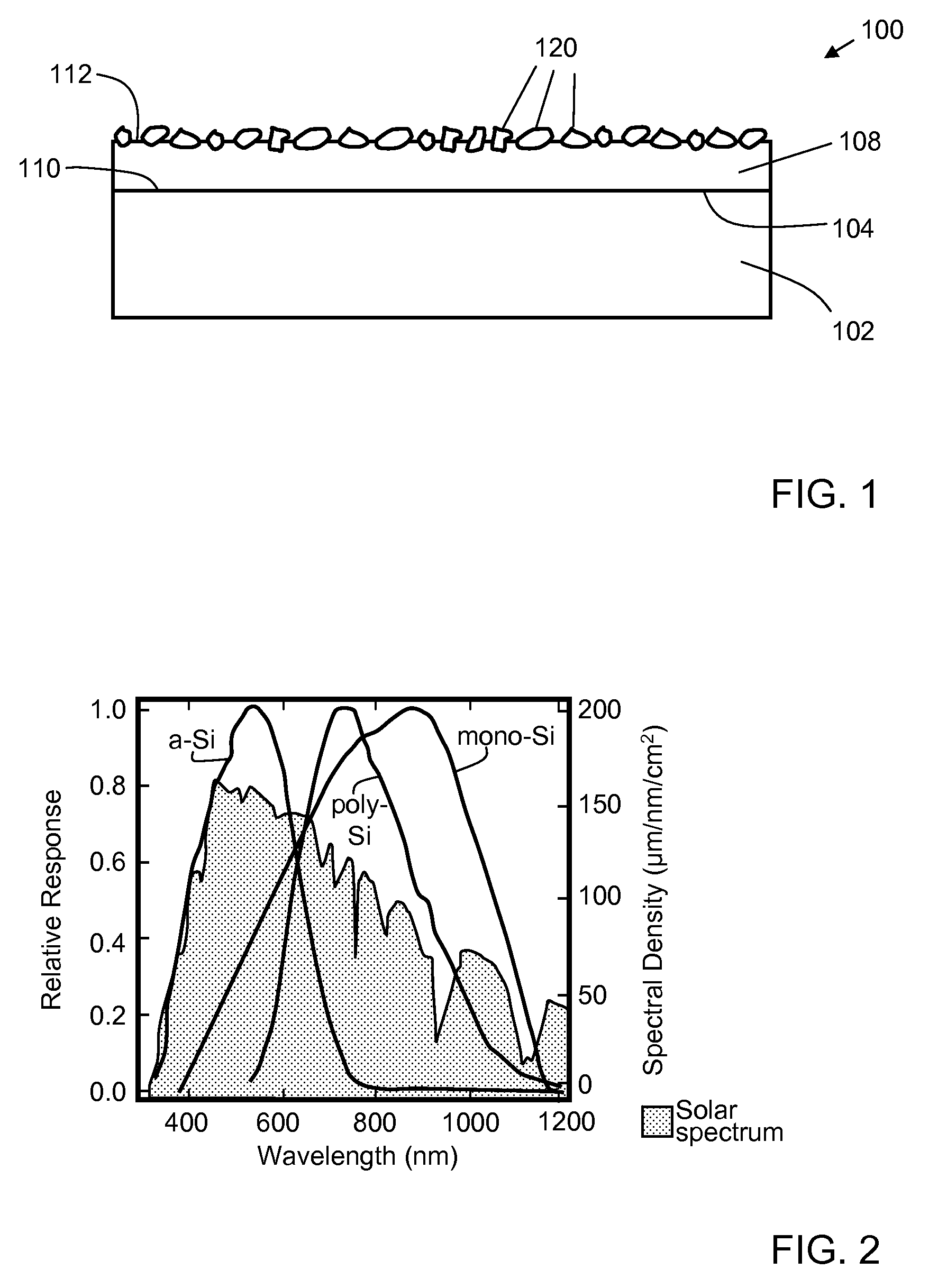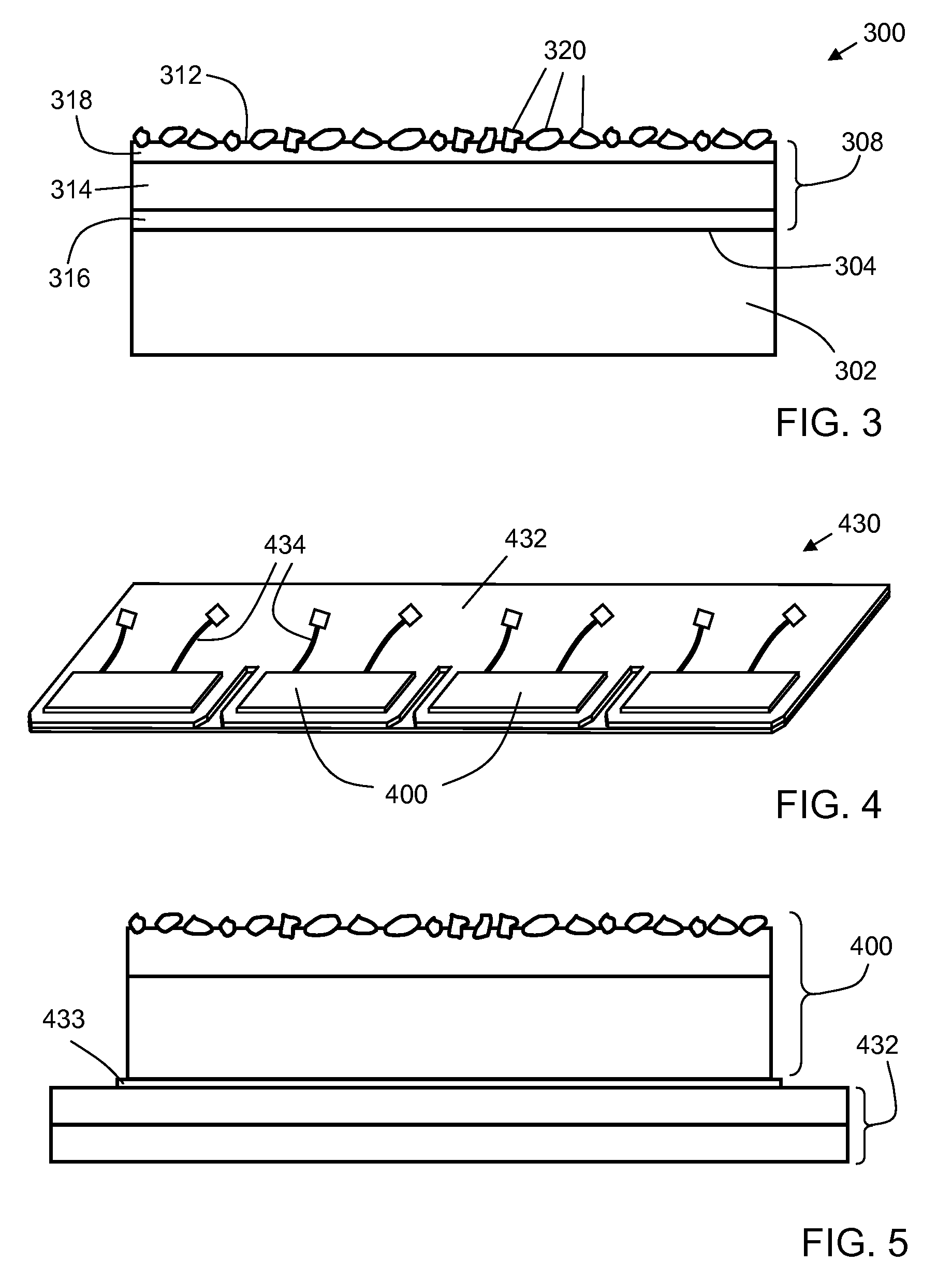Photovoltaic Devices and Photovoltaic Roofing Elements Including Granules, and Roofs Using Them
a technology of photovoltaic roofs and photovoltaic elements, applied in the direction of pv power plants, sustainable buildings, transportation and packaging, etc., can solve the problems of increasing the cost of fossil fuels, increasing the cost of fossil fuel combustion, and not being aesthetically pleasing, so as to achieve significant photovoltaic power
- Summary
- Abstract
- Description
- Claims
- Application Information
AI Technical Summary
Benefits of technology
Problems solved by technology
Method used
Image
Examples
Embodiment Construction
[0030]One aspect of the invention is a photovoltaic device. One example of a photovoltaic device according to this aspect of the invention is shown in schematic cross-sectional view in FIG. 1. Photovoltaic device 100 includes a photovoltaic element 102, which has an active face 104 and an operating wavelength range. Photovoltaic element 102 includes one or more photovoltaic cells individually electrically connected so as to operate as a single unit.
[0031]Photovoltaic element 102 may be based on any desirable photovoltaic material system, such as monocrystalline silicon; polycrystalline silicon; amorphous silicon; III-V materials such as indium gallium nitride; II-VI materials such as cadmium telluride; and more complex chalcogenides (group VI) and pnicogenides (group V) such as copper indium diselenide. For example, one type of suitable photovoltaic element includes an n-type silicon layer (doped with an electron donor such as phosphorus) oriented toward incident solar radiation on ...
PUM
| Property | Measurement | Unit |
|---|---|---|
| Fraction | aaaaa | aaaaa |
| Fraction | aaaaa | aaaaa |
| Fraction | aaaaa | aaaaa |
Abstract
Description
Claims
Application Information
 Login to View More
Login to View More - R&D
- Intellectual Property
- Life Sciences
- Materials
- Tech Scout
- Unparalleled Data Quality
- Higher Quality Content
- 60% Fewer Hallucinations
Browse by: Latest US Patents, China's latest patents, Technical Efficacy Thesaurus, Application Domain, Technology Topic, Popular Technical Reports.
© 2025 PatSnap. All rights reserved.Legal|Privacy policy|Modern Slavery Act Transparency Statement|Sitemap|About US| Contact US: help@patsnap.com



